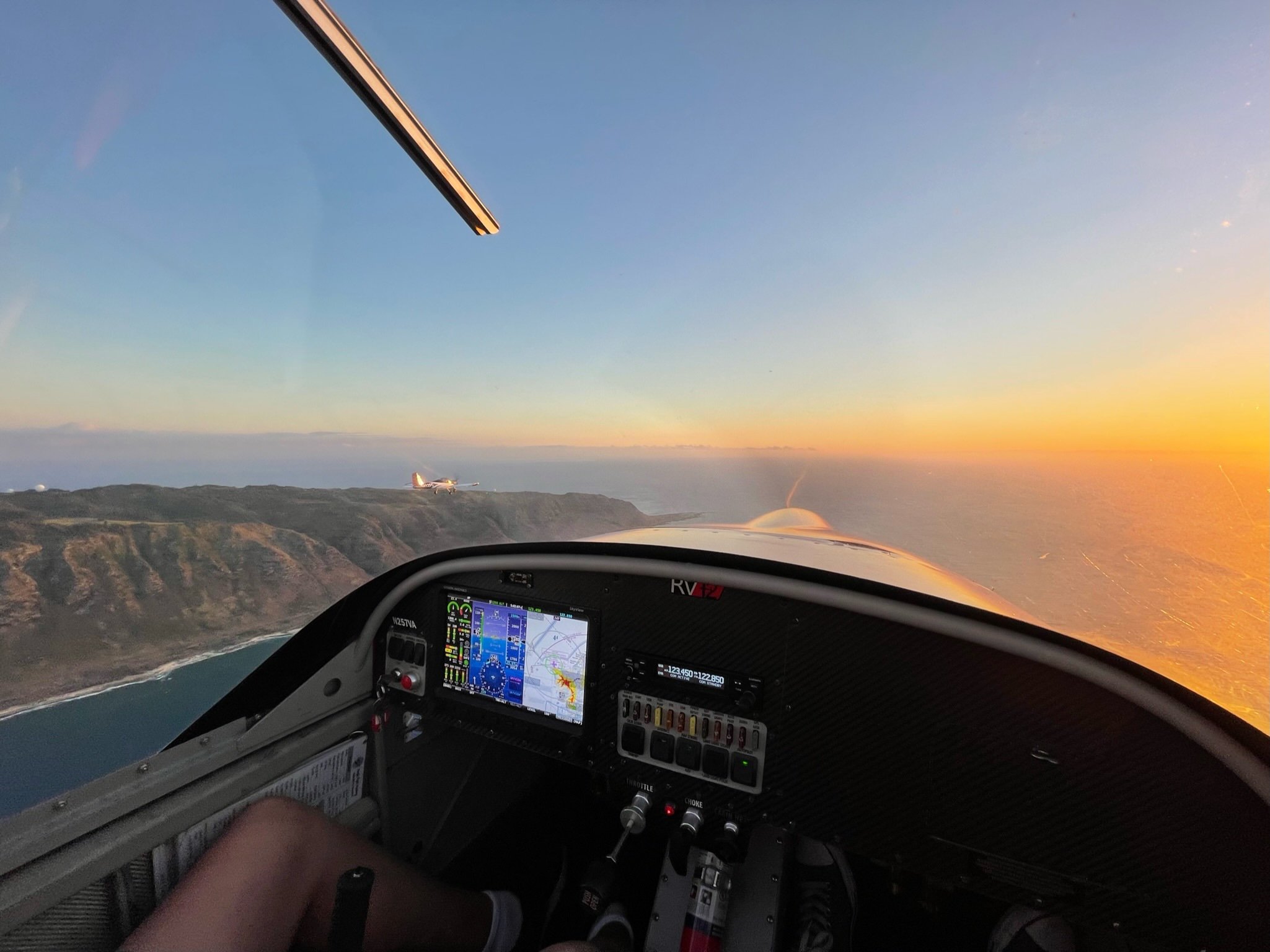
Flying in Hawaii
Hawaii offers a unique, beautiful, and exciting flying experience, albeit with a set of challenges that can be overcome through adequate training, making you a more competent pilot. For pilots looking to explore the beautiful islands of Hawaii in a general aviation aircraft, there are a number of factors to consider:
Weather - One of the biggest challenges of flying in Hawaii is the weather. The islands are located in the middle of the Pacific Ocean and are subject to frequent changes in weather patterns. This can make it difficult to plan flights, especially during the winter months when strong winds and rainstorms are more common. Pilots need to be prepared for sudden changes in weather conditions and have a solid understanding of the unique microclimates found throughout the islands.
Over Water Flying - All of the cross country flights that we do require over water flight. Crossing large bodies of water can present significant challenges for pilots, particularly when it comes to safety and emergency procedures. Proper planning, preparation, and equipment are essential to ensure safety and success on these types of flights. Pilots must be well-trained and experienced, with a keen awareness of the unique challenges that come with flying over water.
Terrain - Another challenge of flying in Hawaii is the terrain. The islands are mountainous and have many steep cliffs and ridges. Pilots need to be skilled at flying in mountainous terrain and be able to read topographical maps. They also need to be prepared to deal with the effects of high altitude on their aircraft and be able to make adjustments to their flight plan as needed.
Airports - Yet another challenge of flying in Hawaii is the limited number of airports and landing strips. While the islands do have several airports, many of them are not open to the public. This means that pilots need to carefully plan their flights and ensure that they have enough fuel to make it to their destination. It also means that they need to be skilled at landing on small runways and dealing with the unique challenges of short takeoff and landing (STOL) operations like when operating out of Kalaupapa on the northern part of Molokai. A big consideration, and one that affects us significantly, is the Honolulu Class Bravo airspace that governs where we operate out of. More on this below…
Volcanos - One unique aspect of flying in Hawaii is the presence of active volcanoes. Kilauea, one of the world's most active volcanoes, is located on the island of Hawaii and can spew ash and gas into the air, which can affect visibility for pilots. Pilots need to be aware of the location of the volcano and its current activity before planning a flight.
Cultural Considerations - Finally, flying in Hawaii requires a certain level of cultural sensitivity. The islands have a rich history and culture, and pilots need to be respectful of the land and the people who call it home. This means being aware of cultural sensitivities and avoiding flying over sacred sites and areas where people are gathering for traditional ceremonies.
In conclusion, flying in Hawaii can be a thrilling and unique experience, but it also comes with its own set of challenges. Pilots need to be prepared for the weather, be skilled at flying in mountainous terrain, have the proper safety equipment and training for over water operation, be aware of the location of active volcanoes, be able to operate in limited airspace, and be culturally sensitive. With careful planning and preparation, however, flying in Hawaii can be a rewarding and unforgettable experience.
Flying in Hawaii Articles & Resources
VFR departure and arrival procedures at Honolulu - Honolulu International Airport is one of the most busy and unique airports in the world. It is one of a very few Class Bravo airports that combines military operations, commercial passenger operations, commercial cargo operations, and general aviation all in one place. Because of this, it requires advanced preparation if you are planning to fly solo in this airspace. This article will provide you the foundational knowledge you need for your checkout flight.
Hawaii Flying Safety Guide - Excellent guide to all the different airports and local procedures you can expect to see while flying here. Be advised - this guide is from 2013, so the exact procedures may have changed. Be sure to refer to the Pacific Chart Supplement for the latest information.
Operations at Non-Towered Airports - Many of our airports here are non-towered, and most of them that do have a tower close after hours. It is essential you brush up on non-towered operations.
Hawaii aviation weather - For those that don’t use ForeFlight…
ForeFlight visual waypoints and departure/arrival overlays - Elevate your situational awareness with this awesome content pack for ForeFlight. These overlays will depict all of the VFR departure and arrival procedures on your ForeFlight map. An excellent resource!
